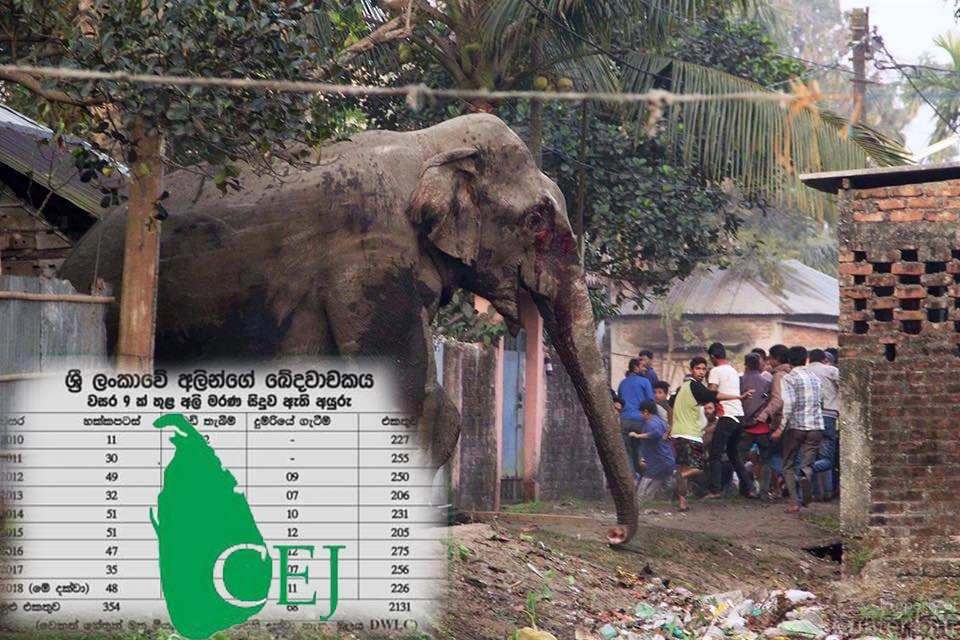Centre for Environmental Justice seeks judicial intervention to draft National Policy on elephants
A petition filed seeking an order in the Nature of the Writ of Mandamus directing the environmental authorities to formulate a National Policy on protection of elephants, including steps to minimize attacks on human beings was taken up before the Court of Appeal yesterday
The Court Appeal subsequently fixed the petition for argument on March 25 and the respondents were given further time to file objections.
However the court was informed that authorities are in the process of formulating a solution to the human-elephant conflict consequent to a Satyagraha staged by farmers in Sooriyawewa in the Hambantota district.
The petitioner Withanage Don Hemantha Ranjith Sisira Kumara, Executive Director of the Centre for Environmental Justice has cited Minister of Environment and Wildlife Resources, Inspector General of Police, Director General of Wild Life and Attorney General as respondents.
He further sought an order directing the Respondents to act collectively in order to formulate a proper mechanism to protect all elephants acting under, and in term of the sections of the Fauna and Flora Protection Ordinance as well as under the Forest Ordinance.
The petitioner state that the Asian elephant (Elephas maximus), also called Asiatic elephant, is the only living species of the genus Elephas and is spread throughout the Indian subcontinent and Southeast Asia. Sri Lankan elephants (Elephas maximus maximus), which is a subspecies of the Asian elephant is the most iconic animal in Sri Lanka and occupy an important place in the local culture and eco system.
According to the first national survey of Sri Lanka’s wild elephants held in 2011, it was estimated that the elephant population is approximately 5,879 wild elephants including 122 tuskers and 1,107 calves. However, Elephant experts question the survey methodology and states that this figure is an over exaggeration.The petitioner states that this animal has been listed as Endangered (EN) by the International Union of Conservation (IUCN) because of a population size reduction inferred to be at least 50% over the last three generations, based on a reduction in its area of occupancy and the quality of its habitat. Although there are few accurate data on historical population size, from what is known about trends in habitat loss/degradation and other threats including poaching, an overall population decline of at least 50% over the last three generations (estimated to be 60–75 years worldwide.)
The Petitioner further states that there is an unconventional market for elephant tusks, elephant’s hair and baby elephants for domestication and this has caused a severe threat for the existence of tuskers and baby elephants.
He states that according to the Wild Life Department in 2018 alone, 319 elephants and almost 100 people were killed in elephant -human encounters. Sixty-four of those deaths were caused by explosive devices hidden in fodder bait, known as “hakkapatas”. Fifty-three elephants died of gunshot injuries. The last four years have seen at least 21 cases of elephant poisoning deaths for which perpetrators had not being found.
According to official data, the petitioner states that 293 elephants were killed during the first nine months of thelast year, while 93 people were killed by wild elephants straying into villages near wildlife sanctuaries.
The Petitioner further states that on or about 27thSeptember 2019, the carcasses of three wild elephants were found near the Hiriwadunna reserve in Habarana and later four other carcasses were also found in the nearby areas.





